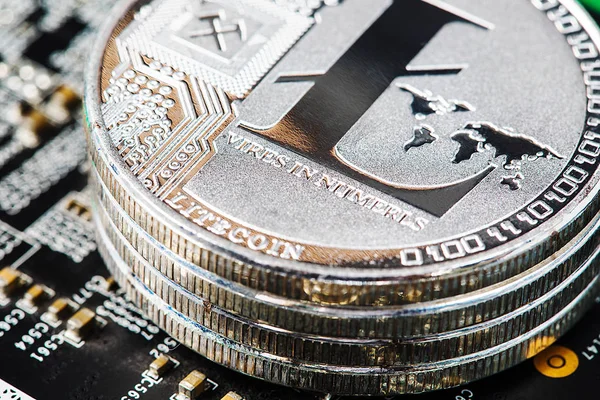Highlights
- Gold is easier to trade than platinum due to its larger market and higher liquidity.
- Platinum is more volatile than gold, with prices fluctuating more frequently.
- Gold’s price has surpassed platinum since 2011, with gold at $2,746 per ounce in 2024.
- Both metals are used in jewelry, but platinum is key for catalytic converters, while gold is used in electronics.
- White gold requires re-polishing and re-plating, unlike naturally white platinum, which doesn’t fade.
Have you ever wondered what the difference is between platinum vs gold, and which one is better? Whether you’re choosing a piece of jewelry, planning a wedding ring, or making an investment, it’s important to understand how these two precious metals compare.
In this blog post, we’ll discuss their durability, cost, appearance, and maintenance so you can decide based on your style and budget. Whether you’re after long-lasting wear or a more affordable option, we’ll help you determine which metal is the right choice.
What’s the Difference Between Platinum vs Gold?

Gold and platinum may seem similar, but it’s important to know the differences when deciding which to invest in.
Liquidity
The liquidity of an asset is how easy it is to buy or sell it. Gold is usually easier to trade than platinum because it’s widely traded and has a larger, more established market. This makes buying and selling gold faster and simpler.
On the other hand, platinum has a smaller market with less demand and supply, so it’s harder to trade quickly.
Volatility
Volatility refers to how much an asset’s price moves over time. Platinum is more volatile than gold because of its smaller market size and lower trade volume. Even though gold’s price changes less often, it can still be unstable in the short term. Experts usually suggest long-term investments to avoid worrying about short-term price swings.
Price Difference
The prices of gold and platinum have changed a lot over time. Platinum used to be more expensive than gold, but since 2011, gold’s price has gone higher. According to Markets Insider, in 2024, gold is around $2746 per ounce, while platinum is closer to $1032.
Remember, there are other factors to consider when trading metals. For example, taxes may apply, so checking with a tax professional is a good idea.
Uses
Platinum is harder to mine and is denser than gold, but both metals have many uses. Platinum is key for making catalytic converters, which help reduce car pollution. Its price can change based on how many combustion-engine cars are sold. Gold, due to its high conductivity, is often used in electronics.
Both metals are also popular for making jewelry.
Platinum vs White Gold: What’s the Difference?

The main difference between white gold vs platinum is how they age over time. While both metals look similar, white gold is coated with rhodium, which can wear off and fade to a yellowish color over time. To restore its white appearance, white gold needs to be re-polished and re-plated. Platinum, on the other hand, is naturally white and won’t fade to yellow.
White gold turning yellow can be a big issue, so we offer a lifetime warranty on our ethical rings. This covers both re-polishing and re-plating, so you won’t have to worry about it if you choose us.
Investment Characteristics of Platinum vs Gold
Choosing gold or platinum depends on your needs, risk tolerance, and investment strategy.
Available Investment Products
There are several ways to invest in both gold and platinum. Here are some of the most common options:
- Physical Metal: The traditional approach involves buying physical bars or coins through a precious metals exchange. These can be stored in a secure facility, safety deposit box, or home safe. However, this method often comes with extra storage and maintenance fees.
- Exchange-Traded Funds (ETFs): ETFs allow you to invest in precious metals without physically holding them. These funds bundle various assets, helping you diversify your portfolio. If you’re familiar with buying stocks and already have a brokerage account, acquiring precious metal ETFs is straightforward. Precious metals mutual funds offer a similar alternative.
- Stocks: You can invest in the shares of companies that mine gold or platinum. However, focusing on one stock can be risky due to market fluctuations.
- Futures Contracts: Futures involve an agreement to buy or sell a set amount of gold or platinum at a future date for a fixed price. While this method can yield high returns, it may cause significant losses and is generally better suited for experienced traders.
Storage
If you hold physical gold or platinum, secure storage is essential. Many investors store their metals in safety deposit boxes at banks, while others prefer home safes. If you store precious metals at home, ensure your homeowner’s insurance covers them and keep them in a secure location.
Ease of Purchase
How easily you can buy gold or platinum depends on your chosen method. Purchasing physical bullion can be time-consuming, and you need to work with a trusted dealer and arrange for safe storage. When buying gold coins, ensure you get the right content. For example, 10-karat gold contains less than 50% gold.
Alternatively, you can invest in gold or platinum ETFs through a brokerage or investment app, similar to trading stocks. You won’t own the physical metal, but you avoid the hassle of storage.
Investing in precious metal stocks is another option. Some investors also consider gold IRA investing through specialized companies, but it’s essential to fully understand the associated rules before committing.
Summary
When considering platinum vs gold for investment, both metals have distinct advantages depending on your goals. Gold offers greater liquidity and price stability, making it easier to trade, while platinum’s rarity and industrial demand can lead to higher volatility and potential gains. Whether you’re interested in jewelry, industrial uses, or investment, understanding the differences between these two precious metals can help guide your decision.
FAQ
How Much Is Platinum Worth Vs Gold?
Platinum is more expensive than gold due to its limited supply and higher industrial demand, but prices can fluctuate based on market conditions. Currently, platinum and gold prices may vary, so it’s best to check current rates for an accurate comparison.
Disclaimer
The content provided on this blog is for informational and educational purposes only and does not constitute financial or investment advice. While we strive to provide accurate and up-to-date information, you should not rely on this content as a substitute for professional financial advice. Any financial decisions you make are done so at your own risk, and we encourage you to consult with a licensed financial advisor before making any investment decisions.
The views and opinions expressed in this blog are solely those of the authors and do not necessarily reflect the views of any affiliated entities. The information presented here is not intended as a solicitation or recommendation to buy, sell, or hold any financial product.


